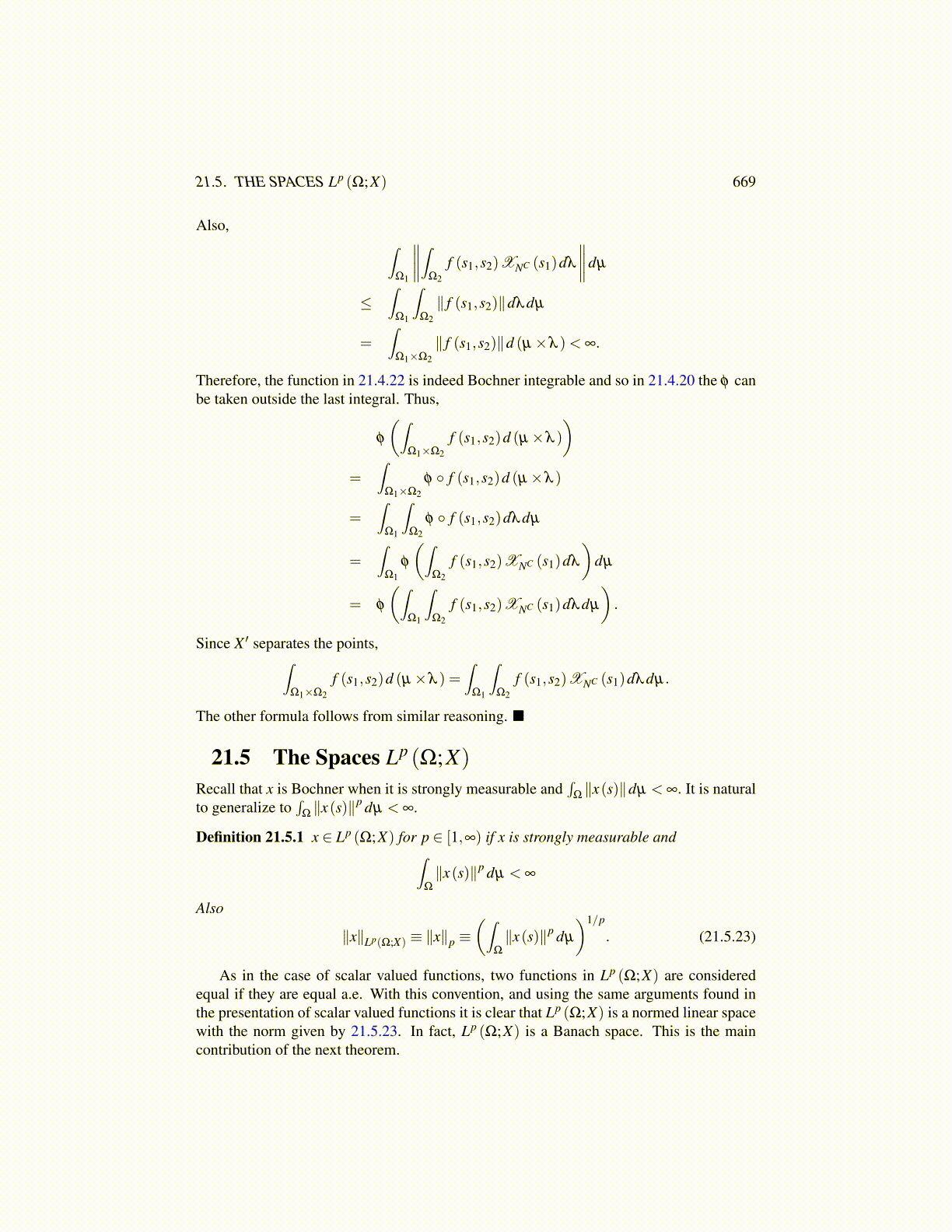
21.5. THE SPACES Lp (Ω;X) 669
Also, ∫Ω1
∥∥∥∥∫Ω2
f (s1,s2)XNC (s1)dλ
∥∥∥∥dµ
≤∫
Ω1
∫Ω2
∥ f (s1,s2)∥dλdµ
=∫
Ω1×Ω2
∥ f (s1,s2)∥d (µ×λ )< ∞.
Therefore, the function in 21.4.22 is indeed Bochner integrable and so in 21.4.20 the φ canbe taken outside the last integral. Thus,
φ
(∫Ω1×Ω2
f (s1,s2)d (µ×λ )
)=
∫Ω1×Ω2
φ ◦ f (s1,s2)d (µ×λ )
=∫
Ω1
∫Ω2
φ ◦ f (s1,s2)dλdµ
=∫
Ω1
φ
(∫Ω2
f (s1,s2)XNC (s1)dλ
)dµ
= φ
(∫Ω1
∫Ω2
f (s1,s2)XNC (s1)dλdµ
).
Since X ′ separates the points,∫Ω1×Ω2
f (s1,s2)d (µ×λ ) =∫
Ω1
∫Ω2
f (s1,s2)XNC (s1)dλdµ.
The other formula follows from similar reasoning.
21.5 The Spaces Lp (Ω;X)
Recall that x is Bochner when it is strongly measurable and∫
Ω∥x(s)∥dµ < ∞. It is natural
to generalize to∫
Ω∥x(s)∥p dµ < ∞.
Definition 21.5.1 x ∈ Lp (Ω;X) for p ∈ [1,∞) if x is strongly measurable and∫Ω
∥x(s)∥p dµ < ∞
Also
∥x∥Lp(Ω;X) ≡ ∥x∥p ≡(∫
Ω
∥x(s)∥p dµ
)1/p
. (21.5.23)
As in the case of scalar valued functions, two functions in Lp (Ω;X) are consideredequal if they are equal a.e. With this convention, and using the same arguments found inthe presentation of scalar valued functions it is clear that Lp (Ω;X) is a normed linear spacewith the norm given by 21.5.23. In fact, Lp (Ω;X) is a Banach space. This is the maincontribution of the next theorem.